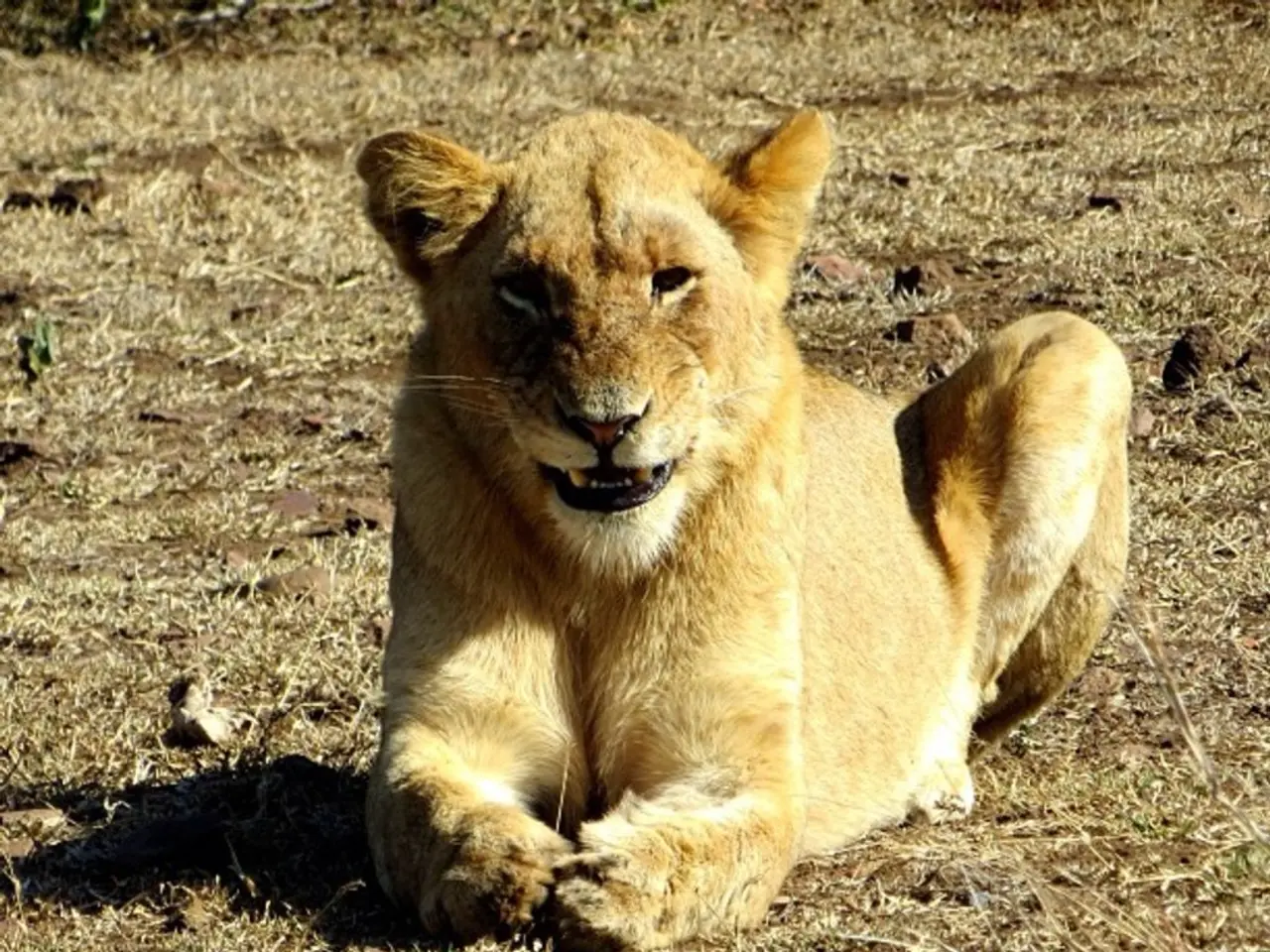Predatory marsupial from Australia, boasting jaw strength capable of fracturing bones - Thylacoleo
The marsupial lion (Thylacoleo carnifex) was a unique carnivorous marsupial that once roamed the lands of ancient Australia. Known for its powerful build and specialized adaptations for hunting, this formidable predator has left a lasting impression on scientists and nature enthusiasts alike.
Lifestyle and Behaviour
Thylacoleo carnifex was most likely an ambush predator, relying on stealth and surprise to catch its prey. Its strong forelimbs, retractable claws, and large, shearing premolar teeth suggest it hunted sizable prey, possibly climbing and pouncing on them like a modern-day "drop bear" myth[2]. Its lifestyle was carnivorous and active, filling the apex predator role in its ecosystem.
Diet
Despite being a marsupial, Thylacoleo was strictly carnivorous, preying on medium to large native herbivores such as kangaroos and wombats. Its teeth were uniquely adapted to slice flesh and crush bone, making it one of the most specialized carnivorous marsupials known. It is sometimes described as having a "pouch lion" morphology due to its lion-like predatory features[3].
Extinction
Thylacoleo carnifex went extinct during the late Pleistocene, around 46,000 years ago. Its extinction was likely due to a combination of factors including climate change causing extreme drought conditions and increased predation pressure or competition from the arrival of Aboriginal Australians. These humans were co-existing with or competing against megafauna like Thylacoleo[1]. Habitat changes and decreasing prey availability likely contributed to its decline.
Legacy and Impact
Fossil sites like the Naracoorte Caves in South Australia have provided remarkably preserved skeletons, allowing researchers to piece together Thylacoleo's appearance and behavior with increasing detail. As researchers uncover more about this remarkable predator, they reveal not just the story of a single species, but of an entire vanished world.
Thylacoleo's extinction is one of Australia's great ancient mysteries, possibly due to climate change, shrinking habitats, or the arrival of the first humans. It stands as a symbol of Australia's lost megafauna, shrouded in both mystery and marvel.
[1] "Thylacoleo carnifex," Australian Museum, accessed April 18, 2023, https://australian.museum/learn/dinosaurs-and-prehistoric-life/thylacoleo-carnifex/
[2] "Marsupial Lion," National Geographic, accessed April 18, 2023, https://www.nationalgeographic.com/animals/mammals/m/marsupial-lion/
[3] "The Marsupial Lion," Smithsonian National Museum of Natural History, accessed April 18, 2023, https://naturalhistory.si.edu/research/collections/marsupial-lion
- The natural history and evolution of the marsupial lion (Thylacoleo carnifex) have been the subject of extensive research in environmental science and paleontology.
- As the field of science advances, technology plays a crucial role in uncovering more about this prehistoric creature, such as through advanced imaging and analysis techniques.
- In education and self-development, understanding the Thylacoleo provides insights into the diversity of life on Earth and our planet's history.
- For those with an interest in general news, the latest findings on Thylacoleo can be found across various media platforms, reflecting the ongoing fascination with this extinct species.
- In entertainment, the Thylacoleo has inspired animated programs and documentaries, capturing the imagination of people of all ages.
- In sports, schools may hold field trips to museums or natural history sites to learn about Thylacoleo and Australia's rich natural history, promoting active learning and exploration.
- Finally, the story of Thylacoleo carnifex serves as a poignant reminder of the consequences of climate change and habitat loss, with implications for a variety of medical-conditions and conservation efforts today.




